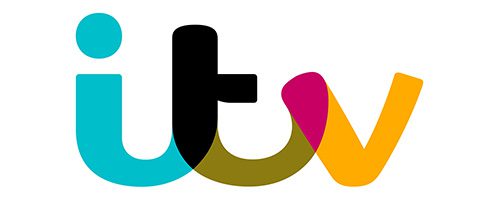Last Updated On 6th February 2025. Welcome to our guide on needlestick injury claims.
These injuries (sometimes referred to as ‘sharps’ injuries) can occur whenever a needle (or another sharp instrument) accidentally penetrates a patient’s skin. In the medical profession, this is referred to as a percutaneous injury and – if the needle or sharp object is contaminated – it is possible for the injury to transmit infections and cause other serious health problems.
Needlestick injuries can happen whenever the skin gets punctured by a hypodermic needle, a scalpel, or during a tattoo appointment. Depending on the case in question, this can cause swelling, bleeding, and tenderness to any part of the body. Needles may contain traces of blood, bodily fluids, and other contaminations. This can cause long-term, debilitating health concerns, all stemming from the initial needlestick injury.
For example, in the case of a needlestick injury, NHS healthcare workers could be accidentally pricked by a needle that has been contaminated with a patient’s blood. If so, there is the possibility that an infection in the source patient’s blood can be transferred to the staff member. Hospital staff are perhaps the group most at risk from this type of injury. But they are not alone.
An infected needlestick can transmit as many as 20 diseases. It is important to note that most of these injuries are caused by clinical negligence, negligent work procedures, or work-related accidents. However, you may be able to make a needlestick injury compensation claim should you be the victim of such an injury. If you want to learn more, this guide is designed to provide all the information you need.
Select a section:
- A guide to accident claims for needle injuries.
- What is a needlestick injury?
- What to do if you are involved in accident causing a needlestick injury.
- How to begin a needlestick injury claim.
- What can be claimed for after an accident causing a needlestick injury?
- The most common causes of needlestick injury.
- Who is at risk of needlestick injury?
- Needlestick injuries caused through medical negligence.
- Needlestick injuries at work.
- Needlestick injury in a public place.
- Accessing the severity of a needlestick injury.
- How much compensation will I get after an accident causing a needlestick injury?
- No win no fee needlestick injury claim.
- Why should you choose us as your claims service for a needlestick injury claim?
- Call for free advice and to start a claim.
A Guide to Accident Claims for Needlestick Injuries
Needlestick injuries can result in the transmission of multiple diseases, should the needle or sharp object which caused the injury to be contaminated. In addition to the pain, swelling, and physical symptoms such an injury may cause, these infections can be severe. If you have been the victim of an injury, you may be able to make a needlestick injury compensation claim.
This guide is designed to illustrate the process needed to win personal injury compensation payouts for contaminating sharps injuries. This guide will explore the compensation process: how to begin a claim, when to start a claim, and how sustaining an injury of this type at work can impact your life. We will also look into the common symptoms of such damages and the causes, the locales, and the people involved in such accidents.
We will even discuss the average payout for this type of injury and how these totals are decided. Finally, we will examine the added benefit of hiring a legal firm to help with your claim.
What is Needlestick Injury?
Needlestick injury claims
A needlestick injury (used interchangeably with ‘needle stick injury’) is caused by a sharp object or needle accidentally causing a puncture wound to the skin. It can also be referred to as a sharps injury or a percutaneous injury.
Such injuries are most commonly caused by needles used in healthcare environments, though there are other ways in which such an injury could be caused. A tattooing needle, scalpel, hypodermic needle or – essentially – any other sharp object may result in this type of injury. If the injury has resulted in a serious health concern, then you may be owed compensation.
As well as the various contaminations that can result from this issue, there are several physical symptoms. These can include (but are not limited to):
- Tenderness at the area of the puncture.
- Swelling on or around the affected area.
- Bleeding as a result of a skin puncture.
However, it is the infections that can frequently be the most problematic result of a needlestick injury. Viruses, bacteria, and other contaminations can be transmitted if, for instance, a needle contains traces of blood or bodily fluids. In a world of policy & procedure, contaminated needles should be disposed of properly. If they have infected another patient, causing contamination or a physical symptom, then you may be owed compensation.
To find out more about needle stick injury claims or for more details on the claims process, don’t hesitate to get in touch with our team today.
Is there a risk of HIV transmission after needlestick injury?
Needlestick injuries that involve blood containing HIV pose a risk of transmission of the virus.
What to do if you are Involved in Accident Causing a Needlestick Injury
If you want to make a needlestick injury compensation claim, there are several steps that you can take to give your claim the best chance of success. First aid advice suggests cleaning the wound with soap and running water. You should always seek medical advice to mitigate the risk of infection.
While your first course of action should always be to seek medical attention, attempting to do the following can also be useful. We advise that you:
- Record the incident: if you make a compensation claim, it is crucial to have evidence. Following the injury, it can help to take photographs. If there are visible signs of bruising or physical symptoms, photographic evidence of this can be useful, mostly if the wounds are healed by the time of a possible lawsuit.
- Gather together your medical records: depending on where the accident occurred, you should be able to document the process. For example, if it happened during a hospital appointment, gather your medical records and any incident reports. Alternatively, if the accident occurred in a tattoo parlour, you may try to gather the appointment bookings and any communications to use as evidence for your needlestick injury claim.
- Reach out to a solicitor: legal wranglings following medical incidents can be complicated. Having a trained expert to help guide you through the process can drastically improve your winning compensation chances.
Given the nature of these injuries, contamination and infection can be diagnosed after the initial incident, and symptoms might not be visible at first. Whenever you find out about a potential accident, you should begin thinking about possible legal proceedings as soon as you have sought medical assistance.
To find out more about needlestick injury claims, please read on or get in touch with our team today.
Needle Stick Injury NICE Guidelines
The National Institute for Health and Care Excellence (NICE) has published detailed guidelines on what to do in the case of injury. Let’s take a look:
- The guidelines are all based on the following four preventative measures, also referred to as interventions. These are:
- Hand hygiene – simply washing hands properly has the potential, according to one study reviewed, to reduce the spread of the likes of respiratory infections by 45%.
- The use of personal protective equipment (PPE) – NICE recommend that gloves be worn for the likes of invasive procedures, contact with sterile sites and any activities that carry the risk of exposure to blood. Gloves should be single-use and discarded as clinical waste.
- Proper use and disposal of sharps – all sharps injuries are considered preventable, and their need for proper disposal as clinical waste is vital. It’s estimated that the average risk of contracting the following infections following an injury caused by a needlestick is:
- Hepatitis B – 1 in 3, or 33.3%
- Hepatitis C – 1 in 30, or 3.3% – a useful statistic if you’ve been wondering can you get hep C from a needlestick.
- Human Immunodeficiency Virus (HIV) – 0.31%, or 1 in 319.
- Education of patients, carers and healthcare personnel – everyone involved in providing care should be trained in hand decontamination, use of PPE and the safe disposal of sharps.
If your employer requires you to work with sharps and needles and you feel they have not complied with their legal duties, you could be entitled to compensation if you suffered as a result. Get in touch with our friendly team today for more free legal advice and support on needle stick injury claims.
Can I make a needlestick injury claim?
If you have suffered from a needlestick injury that was not your fault, you may want to know if it is possible to claim compensation. This may be the case. However, you must meet a specific eligibility criteria.
To receive compensation for a needlestick injury:
- You must have been owed a duty of care by the party you are claiming against
- This party must have acted negligently and breached their duty of care
- This must have resulted in you suffering from a needlestick injury
A duty of care is a legal obligation imposed upon specific individuals or organisations. If one has been established, the individual is responsible for taking reasonable steps to ensure the safety of all those in their care. If they fail to do so, they would be in breach of this duty and may be held liable for any harm they have caused.
You may be owed a duty of care in various situations, which will be discussed in more detail later in the guide. However, this is an important element to prove during the claims process as it will demonstrate how the third party was liable for your injury.
If you believe you meet this claim eligibility criteria, get in touch with our helpful advisors today to learn how to claim for a needlestick injury.
How to Begin a Needlestick Injury Claim
Once you have realised that you may have a compensation claim, taking the next step can be tricky. If you have followed the advice in the previous section, you will likely have some evidence of the events surrounding your accident. If this is the case, then you may find yourself asking what to do next.
Legislation regarding these types of injuries can be complicated and obtuse. With this in mind, we always recommend that potential claimants hire legal assistance if they wish to begin a claim. But how does this process work?
If you were to contact our firm, our first order of business would be to arrange for you to have a free consultation session with a member of our team. In this session, you will be able to present both your evidence and your story. We will listen and go over every detail with you, providing a thorough examination of your claim.
We will tell you how likely we believe you will claim to succeed and provide a rough estimate of potential settlement amounts. This is a no-obligation session, so you are not compelled to stick with us following the consultation.
However, should you decide to hire our team, we can begin claiming on your behalf. We can conduct further fact-finding activities. We can arrange for you to meet with a local doctor and have the full extent of your injuries diagnosed. We can inform you of our ‘No Win No Fee’ agreement, which could reduce the financial risk of making a claim.
Should you choose to work with us, we can ensure that the needlestick injury claims process will be smoother and more fruitful. Please read on or get in touch today to learn more about our No Win No Fee services.
What can be claimed for After an Accident Causing a Needlestick Injury
As with many compensation claims, the final settlement total will not be based on a single factor. Though the severity of the injury will be hugely influential in reaching this total (as we will see below), several damages, expenses, and claims can be added together to reach the final amount. These include:
- General Damages: you can claim general damages to compensate you for the hardships, pain, and mental anguish you must have endured due to the injury. These factors are often difficult to quantify monetarily.
- Care Claims: in situations where help is needed due to the injury, the expenses of hiring such a person can be claimed as part of the compensation process.
- Loss of Earnings: if you have needed to take time away from work or your ability to work has been restricted by the injury, then you may be able to claim the value of the loss of earnings as part of your compensation.
- Travel Expenses: If your injury has required you to travel – such as back and forth to medical appointments – then you may be able to claim for these costs, which could be fuel or train fares.
- Medical Bills: needlestick injuries will likely need medical treatment, and – should these result in medical bills – you can claim these expenses back, including private healthcare, should it be required.
It should be noted that personal injury claim values largely depend on the severity of the injury, though this should not limit your scope when seeking compensation.
The Most Common Causes of Needlestick Injury
Of all the accidents involving needlestick injuries, the most common environment for such accidents involves healthcare. With many needles, sharp objects, and potential sources of contamination, examining the most common causes of needlestick injuries is akin to examining the various ways in which healthcare professionals are at risk. Potential causes of such accidents include:
- Improper disposal of needles and other sharp objects.
- Lack of (or improper use of) protective equipment in work or a high-risk environment.
- Failure to follow the advised procedure during medication administration.
- Fatigue, high pressure, and generally, adverse working conditions can be responsible. For instance, needlestick injuries occur predominantly during night shifts.
Needlestick injuries may be minor, resulting in a small amount of bleeding, but the risk of viral or bacterial infection remains very high. In healthcare environments, this risk is exacerbated.
Needle Stick Injury Statistics
Since the introduction of statutes like the Health and Safety (Sharp Instruments in Healthcare) Regulations 2013, employers must do more to protect us from needle stick injuries and sharps injuries at work. However, accidents still occur, and you’d be surprised to hear some of the statistics:
- According to a recent survey by SERMO (the leading global network for doctors), it was found that 94% of practising UK surgeons have either witnessed a colleague experienced a needlestick injury or have suffered one themselves.
- Only 2% of the surgeons asked disclosed that they had not experienced a sharps injury in their careers.
- It’s estimated that the cost of needlestick injuries to the NHS in England each year is £127m, working out at about £500,000 per NHS Trust.
- The survey also found that 93% of UK surgeons believed that high-quality gloves would reduce the risk of sharps injuries.
The results of this survey are illustrated in the graph below.
Needlestick injury statistics graph
These figures just go to show how common injuries involving a sharps instrument in a hospital can be. If you’ve been affected by such an incident and are wondering what to do if you get a needle stick injury, get in touch with our team today for free legal advice. Alternatively, please keep reading to learn more.
Who is at Risk of Needlestick Injury?
As we previously addressed in the earlier sections of this guide, employers must uphold their duty of care – ensuring safe practice and a hazard-free working environment are a top priority.
However, despite this lawful duty, there are circumstances where an error can occur, resulting in an accident. For that reason, we have taken the time to include some workplace statistics within this guide. Although, please note that the statistics provided are not in direct relation to negligence.
It was documented by the Health and Safety Executive (HSE) that there are 1.6 million workers that suffered from an illness or injury due to their place of work. In addition to this statistic, it was reported that 111 workers were fatally wounded, and an estimated 38.8 million in costs were lost due to ill health or injury.
To combat accidents and illnesses within the workplace from occurring, various measures can be taken into consideration, such as:
- Providing members of staff with suitable PPE.
- Offering extensive and up to date training.
- Carrying out routine inspections and risk assessments of the workspace.
Call our team today if you believe your injury was caused by someone else’s negligence or would like more information on needlestick injury claims.
Needlestick Injuries Caused Through Medical Negligence
Even in the highly managed and regulated UK medical industry, needlestick injuries can still occur due to medical negligence. The perpetual possibility of human error makes such issues difficult to eradicate. For example, as many as 80,000 reported needlestick injuries in the NHS each year, meaning that both patients and healthcare workers can be at risk in cases of medical negligence.
You can claim compensation for the needlestick injuries if they occur as the result of medical negligence. Depending on the healthcare facility, you may be claiming either a private hospital or against the NHS. Medical negligence could involve a failure to provide protective equipment and clothing, incorrect disposal of needles and sharp objects, and a failure to maintain a safe and risk-free environment.
Discussing claims with our legal team can be illustrative of the liabilities in your particular case.
Needlestick Injuries at Work
It is essential to mention that, even though needlestick injuries tend to be far higher in medical environments, occupational exposure is still a risk outside of the world of healthcare. If you sustain a needlestick injury at work, the question of responsibility and liability may be asked.
However, one important thing to note is that the employer or contractor’s legal duty is to secure the work environment and protect the staff and visitors against the risk of injury at work. At frequent intervals, the employer should carry out risk assessment procedures and eliminate all hazards. The employer must also provide the right safety equipment for workers to ensure that accidents like this do not occur.
You can claim against an employer should you sustain one of these injuries at work. All you need do is to follow the procedure listed in this guide and begin a compensation claim. We are always available to guide and pursue the case on your behalf.
Needlestick Injury in a Public Place
As in the case of injuries at work, any public place’s occupier must keep it safe for visitors. In this instance, a public place can refer to bars, supermarkets, clubs, banks, amusement parks, tattoo parlours, car parks, and so on. The owner or the operator of the public place is mandated by law to keep it safe for visitors and may be liable for any sharps or needlestick injuries that occur on the premises.
If you want to make needlestick injury claims for a public place incident, following the processes listed above could help you begin the claims process. You can contact us for a free consultation session at any time.
Assessing the Severity of a Needlestick Injury
If needlestick injuries are not properly handled, they can cause more problems in the future. As a result, any compensation claim amount will be determined by the severity of the injury in both the long- and short-term.
For example, a minor injury does not carry the same weighting as a major injury and, therefore, the amount that can be claimed will differ.
It is crucial to assess the severity of the injury before making any claim. To access the seriousness of a needlestick injury, the following is required:
- A complete medical examination to ascertain the extent of the injury or the severity of the injury. Our law firm can arrange such an examination with a doctor local to you.
- A full report detailing the medical extent of the injury, both now and in the future.
- A description of how the injury has affected your life might include an inability to work or a loss of mobility, which can demonstrate the severity of the injury.
Once gathered together, the above evidence will be evaluated and form a key part of the settlement total.
How Much Compensation Will I Get After an Accident Causing a Needlestick Injury?
The average payout for a needlestick injury will depend on the type and severity of your injury. With the potential implications of such injuries ranging across such a broad spectrum, it is not only difficult to provide an estimate as to settlement totals, but it is also challenging to find a comparative medical model.
The compensation calculator table below gives a necessary indication of some of the types of injuries caused by a needlestick type of wound. The figures (except for the top row) are taken from a document called the Judicial College Guidelines. This provides guideline figures for those involved in the claiming process to value claims.
Please only use this table as a guide.
| Injury | Compensation Guideline |
|---|---|
| Multiple Severe Injuries and Significant Financial Losses | Up to £250,000 plus |
| Severe Psychiatric Damage | £66,920 to £141,240 |
| Moderately Severe Psychiatric Damage | £23,270 to £66,920 |
| Moderate Psychiatric Damage | £7,150 to £23,270 |
| Less Severe Psychiatric Damage | £1,880 to £7,150 |
| Bowel Injuries | £15,370 to £29,870 |
| Digestive System - Damage Resulting From Traumatic Injuries (iii) | £8,060 to £15,370 |
| Moderate PTSD | £9,980 to £28,250 |
| Less Severe PTSD | £4,820 to £9,980 |
| Moderate Hand Injury | £6,910 to £16,200 |
We recommend discussing the matter with one of our experts for a more nuanced estimate of your potential settlement amount or finding out more about the claims process.
No Win No Fee Needlestick Injury Claim
Pursuing a compensation claim can be time consuming and expensive. If you’ve suffered a debilitating injury and find your ability to earn money affected, you may struggle with those law firms that want to charge high fees.
We can provide you with a different option. Our No Win No Fee agreement can make your claims process easier and more financially secure. Rather than charging upfront, we can arrange for our costs to be taken from the final settlement amount.
This arrangement – also called a ‘Conditional Fee Agreement’ – can be used to reduce the upfront cost of hiring legal help and can reduce the risk attached to making personal injury claims. If the case isn’t successful, we won’t charge you.
When you’re seeking compensation, our No Win No Fee services can make your life easier. To learn more about how you could benefit, please get in touch today or read on.
Why Should You Choose Us as Your Claims Service for a Needlestick Injury Claim?
We have a considerable amount of experience in winning compensation claims for our clients. We want to help as many people as possible reclaim the damages and expenses they are owed.
If you have suffered as a result of negligence from either the NHS or a private healthcare organisation, we can be of assistance in a healthcare facility or anywhere else. We offer the best blend of experience, expertise, professionalism, and knowledge to make compensation claims stress free.
We have handled many compensation claim cases for our clients, and we are committed to ensuring that anyone who has a good case is successful. We can offer a range of benefits for potential clients, including:
- A No Win No Fee agreement.
- Arranging an appointment with a local doctor.
- Offering a free, no-obligation legal consultation session.
- Providing world-class customer service to make your life easier.
When dealing with needle stick injury claims, there’s no one better suited. We can handle every single aspect of your case, so call today for more information.
Call for Free Advice and To Start a Claim
If you have sustained a needlestick injury that wasn’t your fault, be that at work or elsewhere, we can help you make a compensation claim for your suffering. We are ready to provide you with an expert consultation session to help you understand your rights in this situation, as well as some free legal advice and a chat through the services we could offer you.
If you have grounds to claim, we can connect you to our panel of personal injury lawyers with over 30 years of experience handling medical negligence cases and the like. What’s more, they always work on a No Win No Fee basis, so there’s no need to worry about any financial risk in hiring a solicitor.
For anyone interested in pursuing a compensation claim, you can either fill out the contact form on our website or call 0800 073 8804. We’ll arrange for a consultation and help you win the compensation you are owed on a No Win No Fee basis.
Helpful Links
NHS What should I do if I injure myself with a used needle?
This NHS Link is a guide if you pierce or puncture your skin with a used needle to immediately aid advice.
Sharps injuries are a risk in the health and social care sector. Sharps contaminated with an infected patient’s blood can transmit more than 20 diseases, including hepatitis B, C and (HIV) human immunodeficiency virus.
Click here to read our guide to accidents at work
If you’ve suffered harm in an accident at work, this personal injury claims guide will help.
To learn more about medical negligence, head here
Our detailed guide to medical negligence claims.
Needlestick Injury Claims FAQs
How common are needlestick injuries?
As we’ve seen above, in some settings, needle stick injuries can be quite common. For example, 94% of UK surgeons have reported either witnessing or experiencing a needlestick injury. Sometimes, but not always, this has come after the victim has chosen to inject drugs into their system.
Can you get an STD from a needlestick?
While you can’t get STDs or STIs from needlestick injuries, you can develop blood-borne viruses and infections like HIV and Hepatitis B and C, as well as up to 20 other infections. It’s important to wash the wound thoroughly and seek urgent medical advice. You can speak to an expert advisory group on AIDS for more information.
How many sharps injuries occur annually in the UK?
A study by Biomedicine International (2010) estimated that 100,000 needlestick injuries occur in the UK each year.
What should you do after a needle stick injury?
You should allow the wound to bleed and wash it under running water using soap if contaminated. Avoid scrubbing the wound, opting for more gentle and effective motions to clean it before drying and covering it with a plaster.
Who is most at risk?
Surgeons, care workers and any surgical staff in an operating room are most at risk from needle stick injuries.
What tests are done after a needlestick injury?
Tests conducted by healthcare workers cover the likes of the Hepatitis B virus, HIV and Hepatitis C, all at various intervals after the injury.
Should you squeeze a wound?
The health service across England and Wales does this, though there’s no credible evidence to support this making a difference.
What happens if you get poked by a used needle?
In the worst-case scenario, the needles could include bodily fluids or blood containing a virus that could spread into your body.
Thank you for reading our guide to needlestick injury claims.









